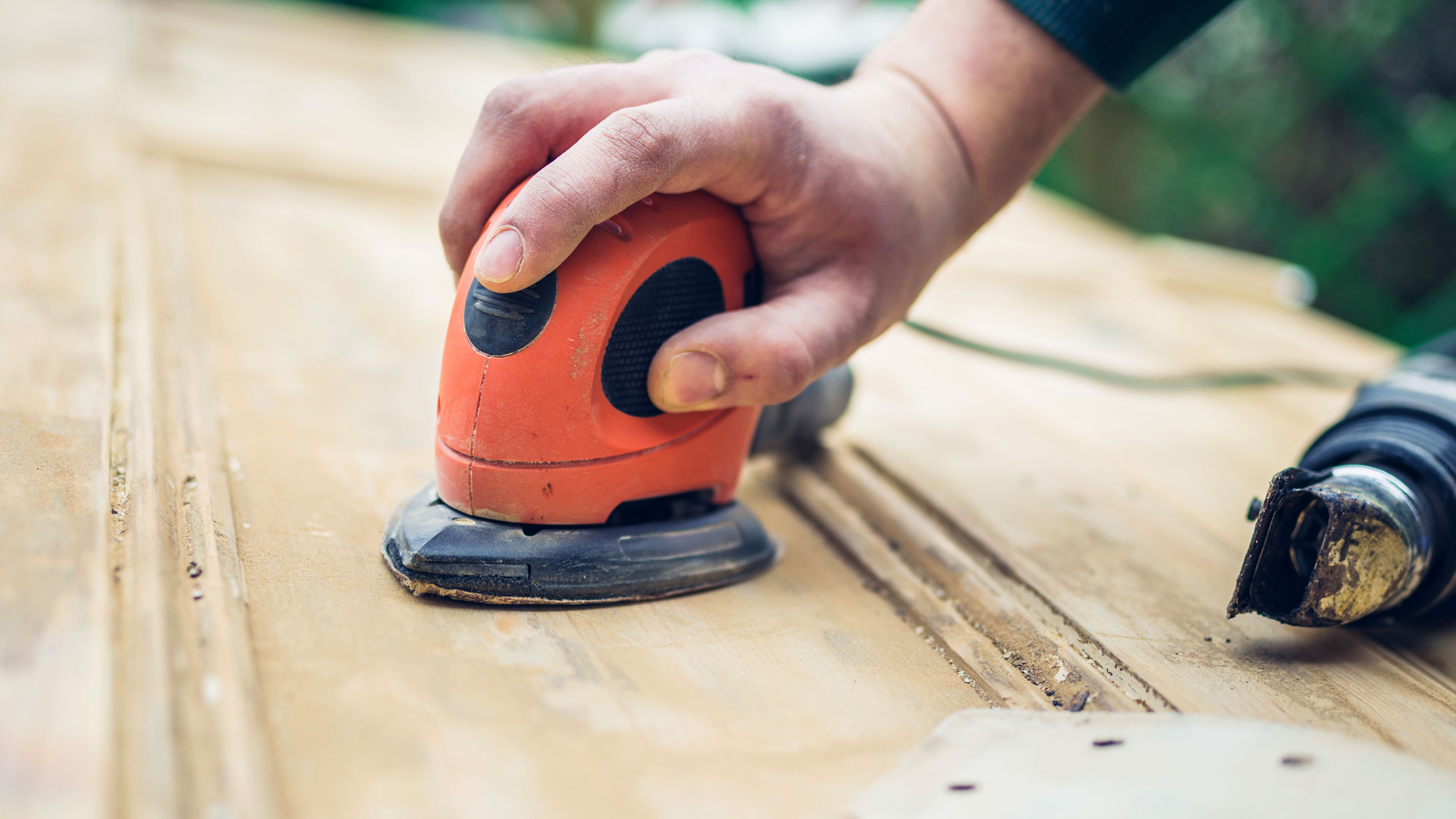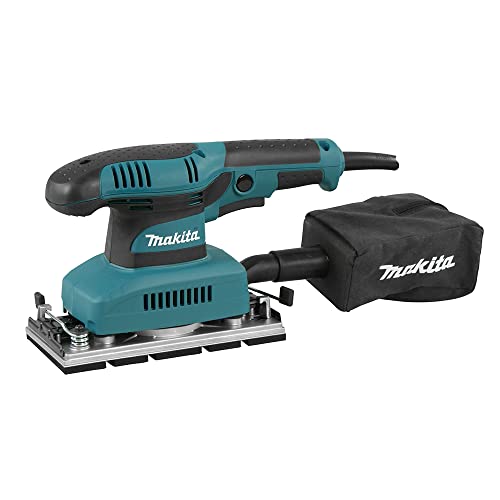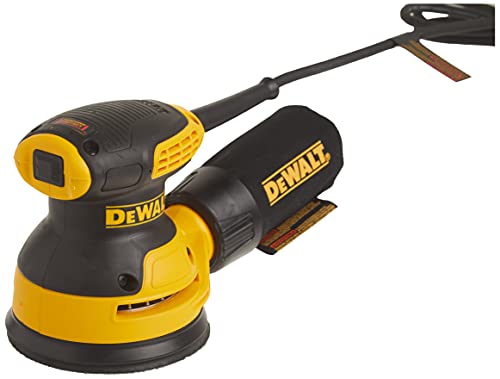Take your sanding skills to the next level with these 9 must-know tips and techniques
Every DIYer needs to know how to sand properly. We guide you through selecting the right sander to achieving a great finish

Sanding may seem like a simple skill, but there is so much to master to get a professional finish. Like all home renovation or DIY projects, choosing the right tools for the job is the key to doing a job well. Selecting the right sander and the correct sandpaper grit are the basics that go a long way to ensuring sanding success.
Beyond the basics, there are also some simple rules to follow to ensure that sanded surfaces are ready for the next step.
We explore essential techniques and tips to make sure that your time spent sanding isn’t wasted. Follow our simple nine-point plan, and your sanding skills will only get better.
1. Choose the right sander
When taking on a sanding project, you need to make sure that you choose the right sander to get the finish you want. A power sander is a common option for most sanding jobs, as it is quick and effective. But which type of sander you choose depends on the project you're working on.
Mark Irving, building expert at Build & Plumb recommends the best orbital sander for most jobs. “Orbital sanders are known for their versatility, which makes them ideal for DIY enthusiasts who are looking to complete general sanding jobs.” He adds, “In particular, random orbital sanders are a good option as they can remove an effective amount of material, whilst offering a refined finish.” Check our guide on how to use an orbital sander for more insight.
Sheets sanders are similar but are more prone to leaving marks on wood, but this isn’t a big issue if the wood is going to be painted.
For more intricate sanding tasks, you need a detail sander (also known as a palm sander) like the BLACK+DECKER Detail Mouse Electric Sander on Amazon. The size of the sander and shape of the sanding pad allow you to get into corners and other hard-to-reach areas.
For larger and tougher jobs such as sanding floorboards or other rough surfaces where you want rapid removal of wood, a belt sander is a good choice.

Try these power sanders on your next project

Mark has over 20 years of experience in the building sector, leading to a wealth of knowledge surrounding building and renovating that he enjoys sharing with others who are looking to complete their own building projects.
2. Sand by hand when needed
Power sanders are a great choice for most sanding projects, but there will be times when you need to go down the sanding wood by hand route to get the best finish. “Sanding by hand is good for small DIY projects and intricate details," says Mark Irvring. "Sandpaper offers more control than a power sander and allows you to effectively sand small corners and edges.”
Bring your dream home to life with expert advice, how to guides and design inspiration. Sign up for our newsletter and get two free tickets to a Homebuilding & Renovating Show near you.
Examples would include architraves or mouldings around doors or windows, or when painting skirting boards with details that a power sander can’t tackle; then sanding by hand is the only option.
“If the object you are sanding has a complex shape or curves then sanding by hand will offer good movability. In addition, sandpaper comes in handy when finishing off an item, as it can help to smooth out imperfections after using a power sander," adds Mark.
When sanding by hand, there are tools that can help ensure a good finish. A hand sander, such as the Stanley Hand Sander from Amazon, is a good choice for getting a good grip on the surface and helping to keep it flat and smooth. For more intricate areas, sanding sponges are ideal as they mould to the shape of the wood.
3. Select the right sandpaper grade or grit
Alongside choosing the right sander and technique, choosing the right sandpaper grade or grit is important to getting the right finish on any sanding project. Sandpaper is split into five different grades – extra fine, fine, medium, coarse and extra coarse. Each grade has a range of grits which are the numbers you will see on the back of sandpaper.
For rapid removal of paint or wood you need an extra coarse or coarse sandpaper. Typically they will run from 40-60 grit. A 60-100 grit is a good choice for rough bare wood finishes or sanding back previously painted interior doors, door frames and windows with lots of layers of paint.
The popular choice for most home DIY projects are grits from 120-220. To get rid of minor imperfections and better adhesion on previously painted surfaces 120-180 is a good choice. Try a finer 220 grit where less paint removal is needed, for example between coats. It is also the common choice when sanding painted walls, or rubbing down filler or plaster.

4. Start low, go high
To get the best results on a lot of sanding projects – such as removing paint from doors – you want to start out with a coarse sandpaper. Start with a 40-80 grit to quickly get a smooth-ish and clean surface. Next switch to a 120 grit, followed by a 180 grit sandpaper to get a smooth finish for painting or varnishing.
Using a progression of sandpaper grits helps to remove any scratches from the more aggressive grits which can be especially noticeable when applying a clear finish.
5. Keep your sander flat
It may sound obvious, but when sanding a surface, it's important that you keep your sander as flat as possible to ensure you don’t get unwanted dips and ridges. Try not to spend too long in one area and sand consistently and evenly across the whole surface.
One tip to help make this happen is to mark the top of the surface lightly with pencil strokes. Once the pencil strokes disappear in one section move on to the next section until all the pencil marks are gone. Repeat the process each time you need to sand the area.
6. Go with the grain
Sanding with the natural grain of the wood will help minimise scratches on the surface, resulting in a smoother and blemish-free finish. Mark Irving points out that going against he grain is rarely a good choice. “Sanding against the grain can actually scratch the surface of the wood and leave a rough finish."
7. Stay dust free
Sanding by hand or with a power sander can create a lot of dust that you can breathe in and will spread itself across every nearby surface. You can wear a dust mask as a safety precaution, but if you have a power sander make sure to add the dust bag it comes with or attach it to a vacuum to stop the spread of dust.
If sanding by hand make sure to clear up the dust periodically with a vacuum and/or cover areas with dust sheets like these ARVO Large Plastic Dust Sheets from Amazon where you don't want dust to settle.
8. Sand again, and again if needed
When working on projects that need fine finishing such as painting skirting boards, doors and varnishing you will need to sand in-between coats to get a smooth high quality finish. This is even more pertinent when working with bare wood, as the grain will raise when the first coat is applied.
Use a 220 grit sandpaper when the first coat is dry, and then sand in-between each coat with a 240 grit or higher sandpaper to remove any imperfections or specks of dust or debris that might have settled and dried into the paint or varnish.
9. Replace your sandpaper regularly
Sandpaper will eventually become clogged with dust and debris, which reduces its effectiveness and means more work for you. Once the sheet become worn or it's hard to use, replace the sandpaper.
Using a dust bag or regularly cleaning away dust will help prolong the life of the sandpaper. However, once it begins to clog – you’ll notice small areas of accumulated dust and debris that weren’t there before – consider changing it.
Sanding is a crucial part of the preparation for most painting projects, but there are subtle differences for different projects. Check out our sanding skirting boards and sanding doors guides to make sure you’ve got what you need to get the job done well.. And, if you’ve sanded your floorboards, check out our painting floorboards guide to ensure you get the finish your hard work deserves.
EDITOR’S NOTE: An earlier version of this article included a quote from a purported expert whose credentials we have not been able to verify. The quote has been removed. We regret this lapse in our verification process and have updated our internal protocols to reduce the risk of recurrence.
Steve Jenkins is a freelance content creator with over two decades of experience working in digital and print and was previously the DIY content editor for Homebuilding & Renovating.
He is a keen DIYer with over 20 years of experience in transforming and renovating the many homes he has lived in. He specialises in painting and decorating, but has a wide range of skills gleaned from working in the building trade for around 10 years and spending time at night school learning how to plaster and plumb.
He has fitted kitchens, tiled bathrooms and kitchens, laid many floors, built partition walls, plastered walls, plumbed in bathrooms, worked on loft conversions and much more. And when he's not sure how to tackle a DIY project he has a wide network of friends – including plumbers, gas engineers, tilers, carpenters, painters and decorators, electricians and builders – in the trade to call upon.




